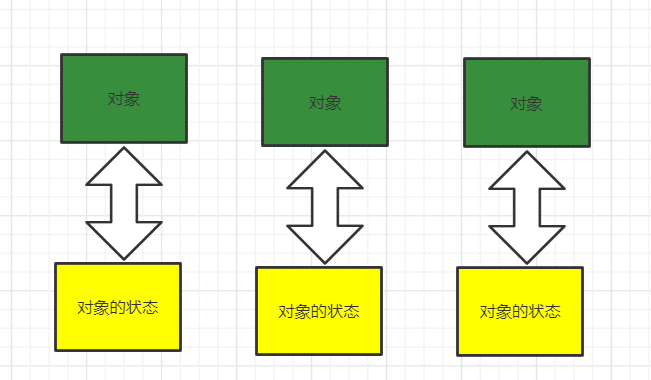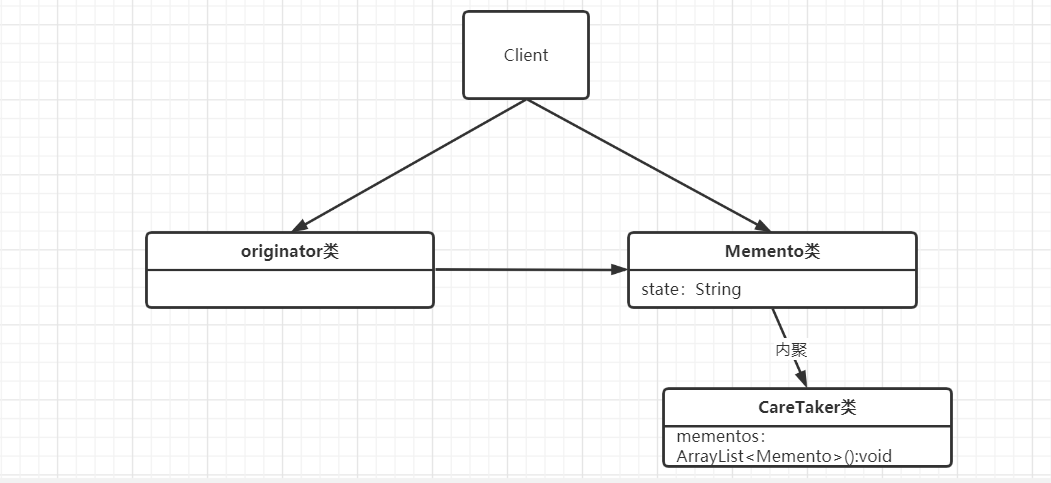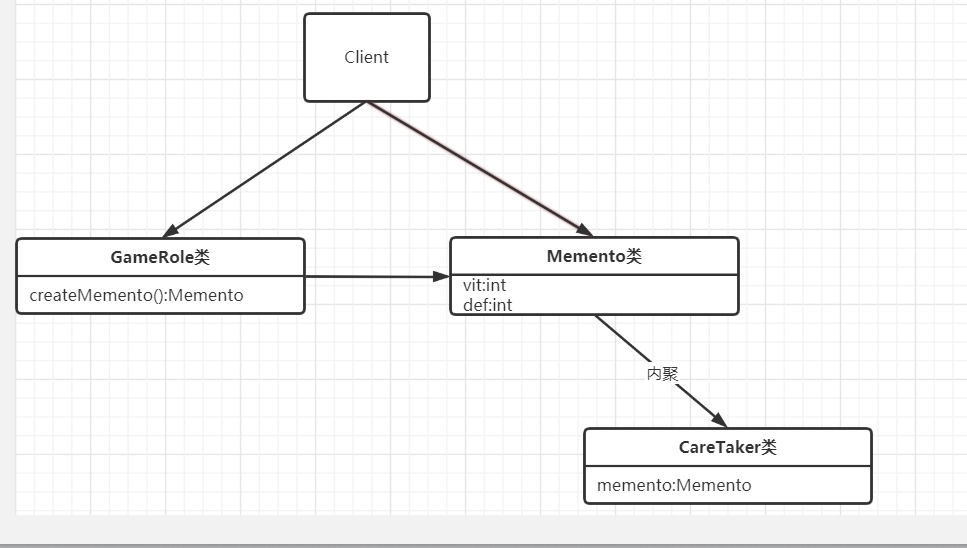一、备忘录模式
1、案例需求
1.1 游戏角色状态恢复问题
游戏角色有攻击力和防御力,在大战Boss前保存自身的状态(攻击力和防御力),当大战Boss后攻击力和防御力下降,从备忘录对象恢复到大战前的状态。
1.2 传统方案类图

1.3 传统方案问题分析
- 一个对象,就对应一个保存对象状态的对象,这样当我们游戏的对象很多时,不利于管理,开销也很大。
- 传统的方式是简单地做备份,new出另外一个对象出来,再把需要备份的数据放到这个新对象,但这就暴露了对象内部的细节
- 解决方法:==>备忘录模式
2、备忘录模式
2.1 基本介绍
- 备忘录模式(Memento Pattern)在不破坏封装性的前提下,捕获一个对象的内部状态,并在该对象之外保存这个状态。这样以后就可以将该对象恢复到原先保存的状态。
- 可以这样理解备忘录模式:现实生活中的备忘录是用来记录某些要去做的事情,或者是记录以及达成的共同意见的事情,以防忘记。而在软件层面,备忘录模式有着相同的含义,备忘录对象主要用来记录一个对象的某种状态,或者某些数据,当要做回退时,可以从备忘录对象里获取原来的数据进行恢复操作。
2.2 原理类图

- originator:对象(需要保存状态的对象)
- Memento:备忘录对象,负责保存好记录,即Originator内部状态
- Caretaker:守护者对象,负责保存多个备忘录对象,使用集合管理,提高效率
- 说明:如果希望保存多个originator对象的不同时间的状态,也可以,只需要用HashMap
3、简单理论实例
3.1 Memento类
1 | public class Memento { |
3.2 Originator类
1 | public class Originator { |
3.3 Caretaker类
1 | import java.util.ArrayList; |
3.4 Client类
1 | public class Client { |
结果:
2
3
恢复到状态1,当前的状态是
当前的状态是= 状态#1 攻击力 100
4、案例代码实例
4.1 案例类图

4.2 代码实例
4.2.1 Memento类
1 | public class Memento { |
4.2.2 Caretaker类
1 | //守护者对象,保存游戏角色的状态 |
4.2.3 GameRole类
1 | public class GameRole { |
4.2.4 Client类
1 | public class Client { |
结果:
2
3
4
5
6
7
游戏角色当前的攻击力:100 防御力:100
和boss大战
游戏角色当前的攻击力:30 防御力:30
大战后,使用备忘录对象恢复到大战前
恢复后的状态
游戏角色当前的攻击力:100 防御力:100
5、备忘录模式的注意事项和细节
- 给用户提供了一种可以恢复状态的机制,可以使用户能够比较方便地回到某个历史的状态
- 实现了信息的封装,使得用户不需要关系状态的保存细节
- 如果类的成员变量过多,势必会占用比较大的资源,而且每一次保存都会消耗一定的内存,这个需要注意
- 使用的应用场景:(1)后悔药(2)打游戏时的存档(3)Windows里的ctrl+z(4)IE中的后退(5)数据库的事物管理
- 为了节约内存,备忘录模式可以和原型模式配合使用